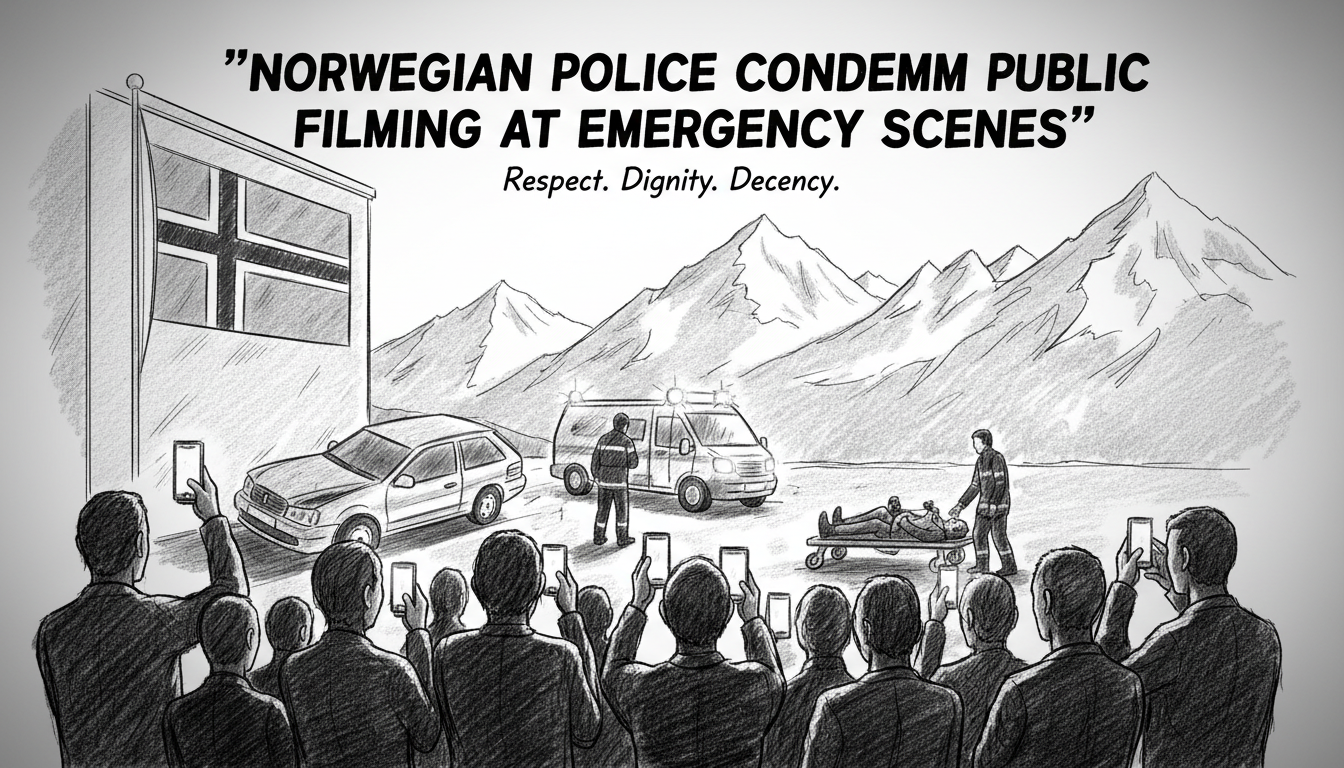Norwegian police officials report growing concerns about public behavior during emergencies. People increasingly film accident victims instead of assisting or clearing space for responders. Police Inspector Grete Metlid described the trend as both sad and serious. She leads the operational coordination unit for Oslo police.
A recent incident at Oslo's Jernbanetorget subway station highlighted the problem. A person was struck by a train during rush hour. Police commander Brian Skotnes urged bystanders to show restraint. Many spectators instead recorded the dramatic scene. Videos quickly appeared on social media platforms.
Emergency responders expressed frustration about the public response. Fire and rescue commander Knut Halvorsen witnessed the Jernbanetorget incident. He wrote a lengthy Facebook post about his disappointment. The majority of onlookers filmed the critically injured victim. Some even laughed during the rescue operation.
Norwegian authorities face difficult questions about regulating such behavior. Germany already prohibits photography at traffic accidents. Norway's ambulance association now wants similar restrictions. Police Inspector Metlid remains unconvinced about legal bans. She believes public awareness matters more than new laws.
Current Norwegian legislation might already address some concerns. Sharing images of vulnerable people could violate existing privacy protections. The core issue involves basic human decency according to officials. Emergency workers need clear access to accident scenes. Bystanders should consider how they would feel in similar situations.
This trend reflects broader societal challenges with technology and empathy. Smartphones enable immediate documentation of dramatic events. Social media platforms encourage rapid sharing of compelling content. The human cost often gets overlooked in this process. Victims deserve dignity during their most vulnerable moments.
Norwegian emergency services continue emphasizing proper public conduct. They remind citizens that anyone could become an accident victim. Next time, the person needing help might be you or someone you love. These situations represent human tragedy, not public entertainment.
The Oslo incident demonstrates how urban environments create particular challenges. Dense population centers mean more potential witnesses during emergencies. Public transportation hubs like Jernbanetorget attract large crowds. Effective emergency response requires public cooperation in these spaces.
Norwegian police will likely continue monitoring this behavioral trend. They prefer education over legislation for addressing the problem. Public awareness campaigns might help change attitudes. The fundamental question remains about respecting human dignity during crises.

